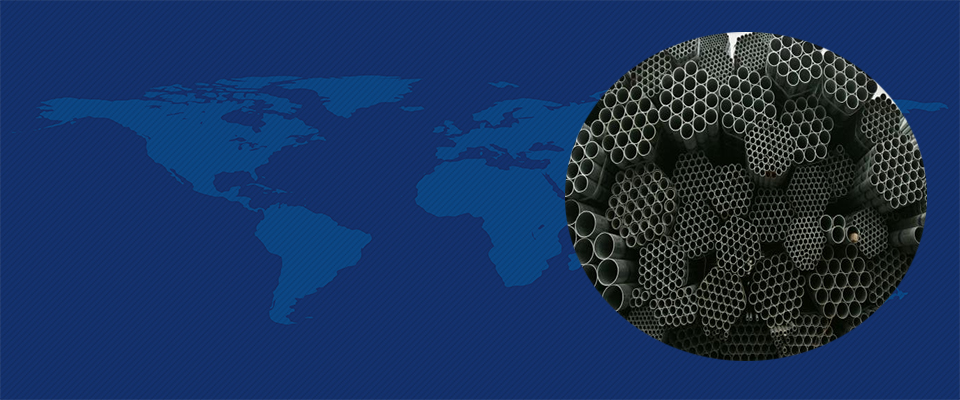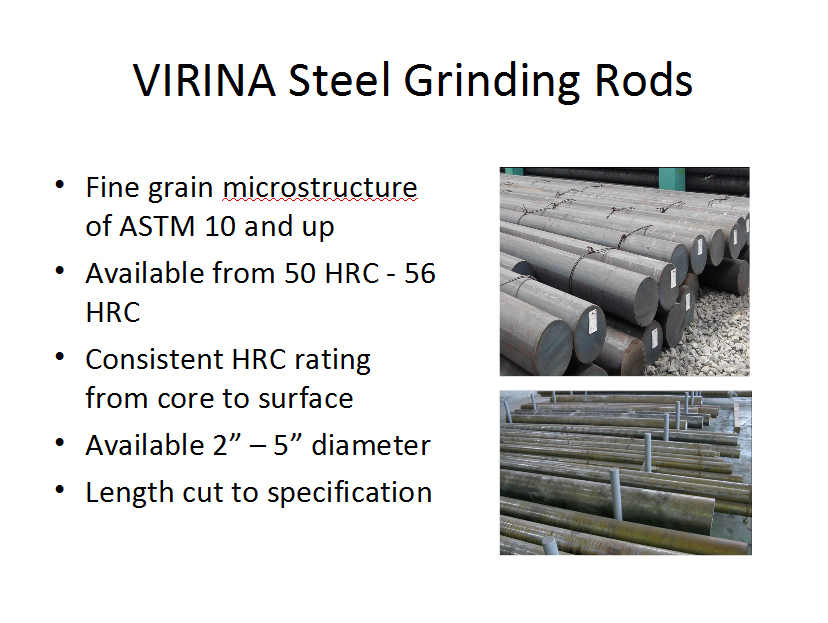Benefits of VIRINA Steel High Strength Steel includes reduced steel consumption, weight savings and longer product life cycles. These benefits all contribute to helping to maintain a green environment.

VIRINA Steel:
VIRINA Steel (VIRINA) is a steel products company that offers a world changing, revolutionary steel product based on a proprietary production process. VIRINA Nano Steel products are offered as an uncoated steel microstructure that is fundamentally better than conventional steel in both strength and corrosion resistance. This pioneering steel product is unlike any steel available in the marketplace. VIRINA Steel can be made in all shapes and sizes for applications in many segments of the steel industry.
VIRINA Steel Nano Steel Grinding Balls:
The first turnkey products VIRINA is offering are VIRINA Steel Nano Steel Grinding Balls for the Cement Industry. The consistent hardness from surface to core of the VIRINA Steel Nano Steel Grinding Balls provides an industry changing competitive advantage over the current products in the marketplace.
VIRINA Nano Steel Grinding Balls have received rapid acceptance in the Cement Industry in Taiwan and China during the initial product release and this success is highly anticipated to continue throughout the worldwide Cement Industry. VIRINA launched their US and Mexico sales efforts in Q2 of 2015 with continued worldwide expansion underway.
VIRINA Grinding Ball Benefits and Test Results:
VIRINA Steel Grinding Balls are made by using a proprietary combination of alloy elements to create a high carbon nano steel. Billets of this steel are forged while using a proprietary heat-treating and cooling process. This process provides the high impact, minimal deformation and extended wear properties of VIRINA Steel Grinding Balls.
In competing test against traditional high chrome steel balls at Anhui Conch Cement the top cement company of the world, VIRINA Grinding Balls delivered many significant benefits. Results of these test included:
VIRINA required 7.5% less balls in weight
VIRINA reduced power consumption for operating the grinding mill by 7.4%
VIRINA average output of tons/hour was 8.5% greater
VIRINA grinding balls showed a 9.1% decrease in wear rate
Management:
Mr. Edward Nixon Chief Executive Officer Edward Nixon has spent the last several years of a illustrious career pursuing the responsible use of natural resources around the globe. After receiving his bachelor’s and master’s degrees from Duke University and North Carolina State, he embarked on a successful career in which he has worked for and served as an advisor to several cutting edge companies in the field of earth science. He is president of Nixon World Enterprises, Inc., in Seattle, Washington, and Chairman of the North American Mining Group in Redondo Beach, California. Edward Nixon is the author of the new book “The Nixons: A Family Portrait”.
John Wong Director Founder of North American Mining Group, iron ore and iron mines; pioneered the computer industry in Taiwan manufacturing key boards, power supplies and cases. Led the efforts for several US technology companies establishing manufacturing base in Taiwan and China from the 70’s thru the 90’s. Spearheaded a major communications company entry into the China cell phone market and launch e-commerce TV show with China Central Television. John earned a Mechanical Engineering degree from San Diego State University with post graduate studies in International Business from University of California San Diego.
Paul Lu Director Mr. Lu is a certified public accountant in the United States. He is also an independent director of Astro Corp., a company listed on the Taiwan Stock Exchange; director of Bright International Group Limited, a company listed on the Hong Kong Stock Exchange; the chairman and director of Green Power (Baoding) Limited, a business involved in renewable energy. Mr. Lu is a managing director of Twin Oaks Capital LLC. Mr. Lu holds a MBA degree from California State University at Los Angeles.
Paul Shike Vice President Founding partner of North American Mining Group, iron ore and iron mines. Mr. Shike has experience with several projects in the steel and iron ore business including evaluating partnerships for US based steel production capabilities. His experience includes founding SFB, a company that imported products from Europe to the US and he led the sales efforts across the United States. Mr. Shike was a founding member of the Access Motorsports team, an IndyCar team with driver, 1999 IRL Champion, Greg Ray. This experience exposed Mr Shike to high-level design and materials use as well as developing sponsor relationships with several Fortune 500 companies. Mr. Shike has been involved in the technology business including selling services for EDS and software sales for companies including Oracle and Cadence Design Systems, the leader in the semiconductor and electronic systems design software sector.

